
Engineering student Ashlan Huang works on constructing a robot in an engineering class at the Center for Advanced Research and Technology (CART) in Clovis on Oct. 6, 2025. Photo by Larry Valenzuela, CalMatters/CatchLight Local
At CART High near Fresno, there is no gum stuck to the floor. The saffron-yellow walls are unmarred by graffiti. Toting laptops, students file calmly down spacious, light-filled hallways to classes like biotechnology and digital marketing. There’s no fighting, no shouting, no bells. No one even cuts class.
It’s hard to believe CART High is a public high school. But in the future, this may be a model for every high school in California.
“We can see from the data that the big, old-fashioned factory model of high school – where students run from class to class with a locker as their only stable point of contact – is not succeeding,” said Linda Darling-Hammond, president of the State Board of Education. “We need to overhaul the whole idea of what high school can be, and right now we have an opportunity to do so.”
The California Collaborative for Educational Excellence, a state agency, is launching a pilot program to redesign high school and middle school. Groups of districts already working on escaping the factory model applied for grant money, and winners will meet, brainstorm, work through challenges and share their experiences statewide, in hopes of inspiring other districts to create innovative high school options. The money will come from $10 million recently allotted in the state budget, as well as state programs promoting career pathways and dual enrollment in high school.
The idea is to move beyond the traditional high school — with its rigid 50-minute periods and stand-alone classes — and replace it with a new type of school that offers work experience, academics tailored to students’ interests, stronger personal connections with staff and multidisciplinary courses that link directly to careers and community needs.

Students sit in an engineering class at the Center for Advanced Research and Technology (CART) in Clovis on Oct. 6, 2025. Photos by Larry Valenzuela, CalMatters/CatchLight Local
“It should be a joy to go to school every day,” Darling-Hammond said. “That’s what we’re looking for.”
Countless schools in California use elements of this idea, with schools-within-schools that offer career academies or other specialized programs. But very few high schools are devoted completely to it.
How high school came to be
Public high schools have only existed for about a century in the U.S. Education for younger children has existed for hundreds of years, but the idea of school for teenagers only came about in the early 20th century. The original high schools were based loosely on a factory model of efficiency, with learning measured in Carnegie units — 120 hours spent over a year studying a particular topic. Promulgated by the Carnegie Foundation at the time in an effort to standardize education, the measure is still used at nearly all high schools and colleges.
But advances in adolescent neuroscience have shown that teenagers learn more in a flexible environment with plenty of hand-on projects and teamwork. Instead of sitting quietly at desks and listening to a teacher, students are more likely to be engaged if they’re allowed some autonomy to pursue topics they’re interested in, with their peers.

Students sit at tables in a hallway at the Center for Advanced Research and Technology (CART) in Clovis on Oct. 6, 2025. Photos by Larry Valenzuela, CalMatters/CatchLight Local
Alternative schools — typically, schools for students who aren’t succeeding in traditional school — have been experimenting with this approach for decades. The state’s top alternative schools aim to not only help students graduate, but also pair them with internships, teach them practical life skills and address their emotional well-being. They often have flexible schedules and small classes, with teachers getting to know students and their families personally.
There’s plenty of evidence that traditional high schools may be outdated. In the most recent state student survey, nearly half of 11th graders said school “is really boring.” Almost 25% of 11th graders were chronically absent last year.
Academically, the numbers were equally dismal. Just 30% of California 11th graders performed at or above grade level in math last year, with some student groups faring much worse. Although the graduation rate was 87%, fewer than half of those students had finished a college or career preparation track.

Physics instructor William Dunn teaches a lesson to students in an engineering class at the Center for Advanced Research and Technology (CART) in Clovis on Oct. 6, 2025. Photo by Larry Valenzuela, CalMatters/CatchLight Local
“The data speaks for itself,” said Russlynn Ali, head of XQ Institute, which advocates for high school reform, and a former head of the U.S. Department of Education’s Office for Civil Rights under President Barack Obama. “There are young people today who’ve graduated from high school but can’t calculate the tip on a split bill, grasp the main idea in an op-ed piece. The case for change is unmistakeable.”
Transcripts and units
There are a few obstacles to transforming high schools statewide to look like CART. One is higher education. The University of California and California State University require high school students to pass a series of classes, known as A-G, to qualify for admission. Advocates for high school redesign say those requirements are too rigid, and high schools need some flexibility in creating new classes that are more interesting to students and more connected to life outside the classroom. They also say that traditional letter grades, which colleges rely on to admit students, are too limiting and that colleges need to consider a new kind of transcript that more accurately reflects students’ abilities.
Another obstacle is the Carnegie unit, which is an integral part of the way high schools and colleges are structured. Even the Carnegie Foundation has been lobbying for changes, arguing that schools should measure students’ progress based on what they know, rather than how much time they’ve spent in a classroom. But so far, colleges have shown little interest in dropping the Carnegie unit.
A school for ‘the C kid’
CART High, which stands for Center for Advanced Research and Technology, opened about 25 years ago in a renovated water pump facility in Clovis. A joint initiative between Clovis Unified and Fresno Unified, the idea was to reach students who were floundering in school and give them some career experience that could also boost the local economy. It wasn’t quite an alternative school, but it wasn’t an honors program, either.
“We weren’t looking for the top students. We were looking for the disengaged kids,” said Staci Bynum, CART’s dean of curriculum and instruction who’s been at the school since its inception. “The C kid is going to excel here.”
CART is open to 11th and 12th graders from both districts, with students selected through a lottery. Last year, more than 2,200 students applied and 1,000 were accepted. Nearly 80% of CART’s enrollment is low-income.

Forensic science Instructor Erin Andrade shows animal skulls to a classroom of students for a lesson at the Center for Advanced Research and Technology (CART) in Clovis on Oct. 6, 2025. Photo by Larry Valenzuela, CalMatters/CatchLight Local
Students spend half their day at their regular high school taking math, foreign language, art and other classes, and half their day at CART, where they choose an area of focus. Options include law and policy, business, forensics and psychology, among other topics.
Classes, which the school calls labs, are three hours long, and are taught by a trio of teachers who weave in literature and other academic subjects that are relevant to the subject. In biotechnology, for example, students read “The Andromeda Strain” and “The Martian,” and write their own science fiction stories based on concepts they’re learning in class. In the law class, students read Othello or Hamlet then subject characters to a mock trial.
“We work really hard to get kids to see the bigger picture of why they’re learning what they’re learning,” said English teacher Emily Saeteurn. “We want them to have that ‘aha!’ moment.”

English teacher Emily Saeteurn at the Center for Advanced Research and Technology (CART) in Clovis on Oct. 6, 2025. Photo by Larry Valenzuela, CalMatters/CatchLight Local
Attendance is nearly 100% and discipline problems are almost unheard of, said principal Rick Watson. More than 90% of students scored at least “proficient” on the English portion of the Smarter Balanced test. Students take the math portion at their other high school.
When he’s not running the school, Watson is giving tours. Education officials from around the world often visit, in hopes of replicating the CART model. Numerous CART-inspired schools have opened around California.
“You have kids in comprehensive high schools everywhere who are falling through the cracks,” Watson said. “Comprehensive high schools don’t work for some B, C, D students. The students have potential but they’re disconnected.They’re desperate for a different model of education.”
Senior Madelyn Quiroga, who’s in the biotechnology class, said she has mediocre grades at her regular high school, but all A’s at CART.

Student Madelyn Quiroga at the Center for Advanced Research and Technology (CART) in Clovis on Oct. 6, 2025. Photo by Larry Valenzuela, CalMatters/CatchLight Local
“At my other school, they just throw stuff at you and never really explain it. Here, they actually teach us,” she said. “And it’s all stuff we actually want to know, so it sticks in your brain. Like when I hear someone talk about CRISPR (gene editing technology), it’s like, ‘Oh, I know something about that.’”
Audrey Riede, an 11th grader in the law class, said she’s so inspired she wants to be a defense attorney.
“CART is way better than normal school,” she said. “The teachers aren’t just trying to get you to pass, they really want to make you think. It’s just a totally different environment.”
The state will announce the winning pilot proposals in November.

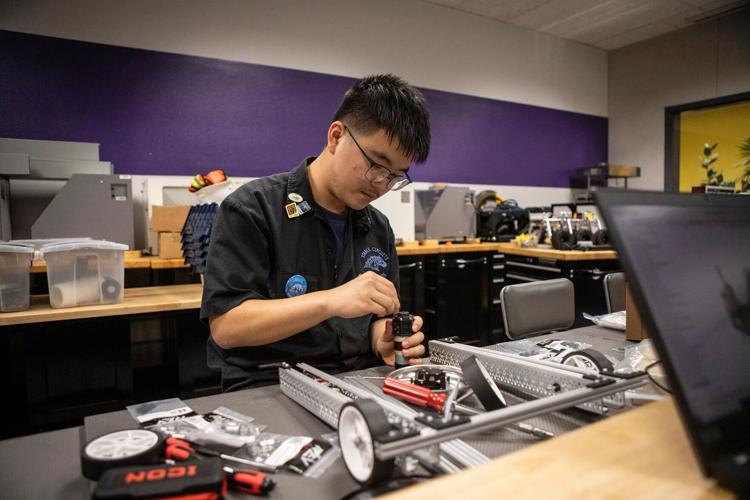
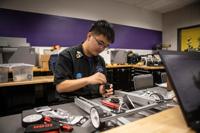
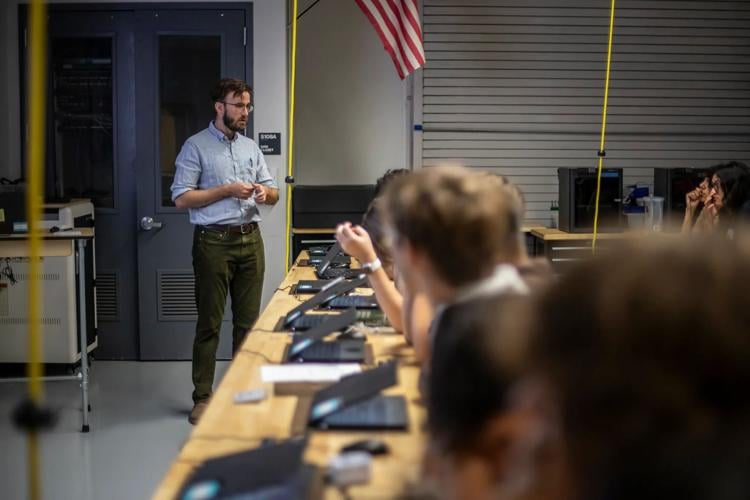
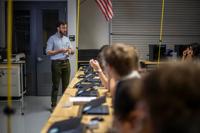
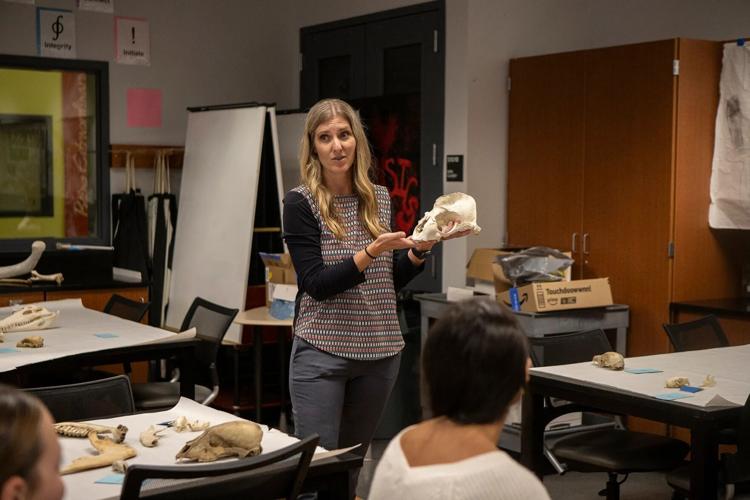
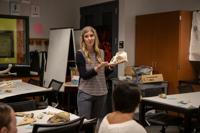
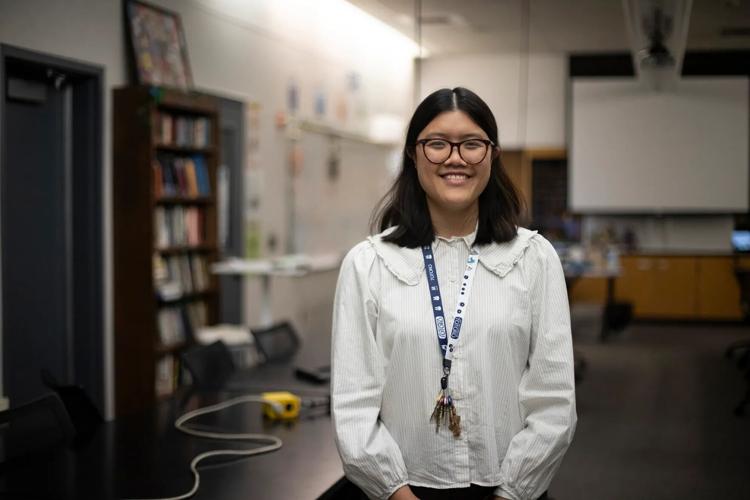
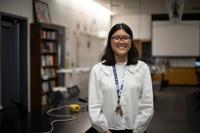
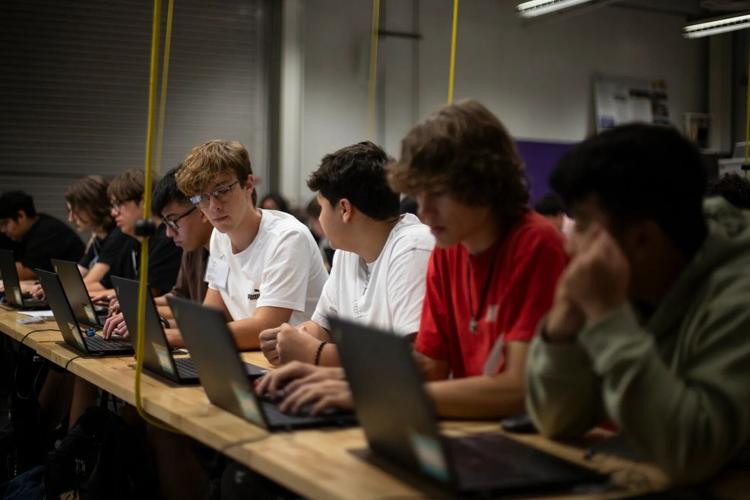
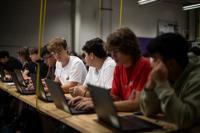
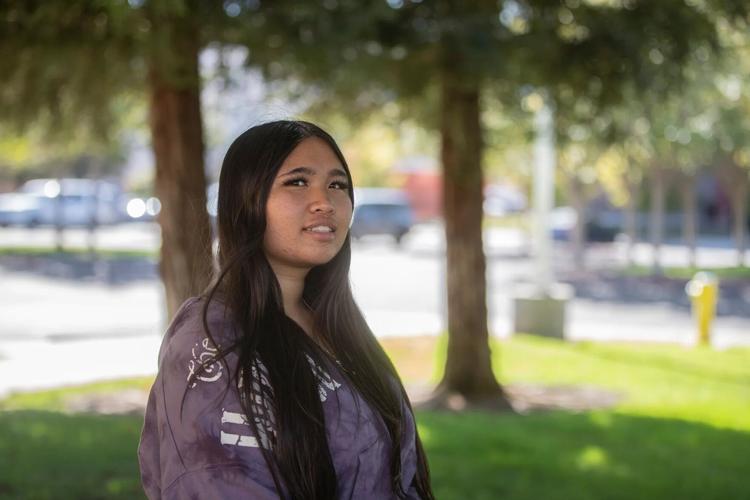
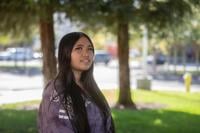
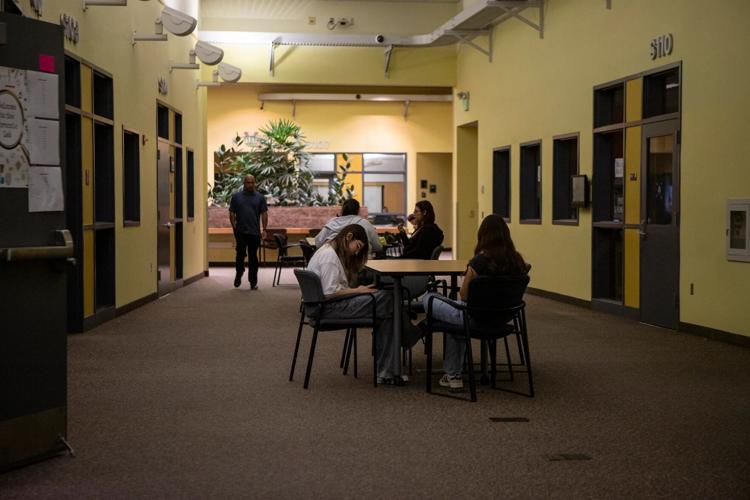
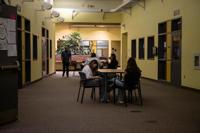

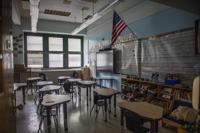



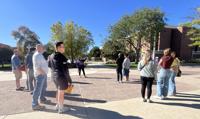

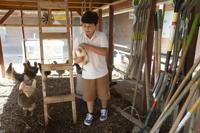
(0) comments
Welcome to the discussion.
Log In
Keep it Clean. Please avoid obscene, vulgar, lewd, racist or sexually-oriented language.
PLEASE TURN OFF YOUR CAPS LOCK.
Don't Threaten. Threats of harming another person will not be tolerated.
Be Truthful. Don't knowingly lie about anyone or anything.
Be Nice. No racism, sexism or any sort of -ism that is degrading to another person.
Be Proactive. Use the 'Report' link on each comment to let us know of abusive posts.
Share with Us. We'd love to hear eyewitness accounts, the history behind an article.